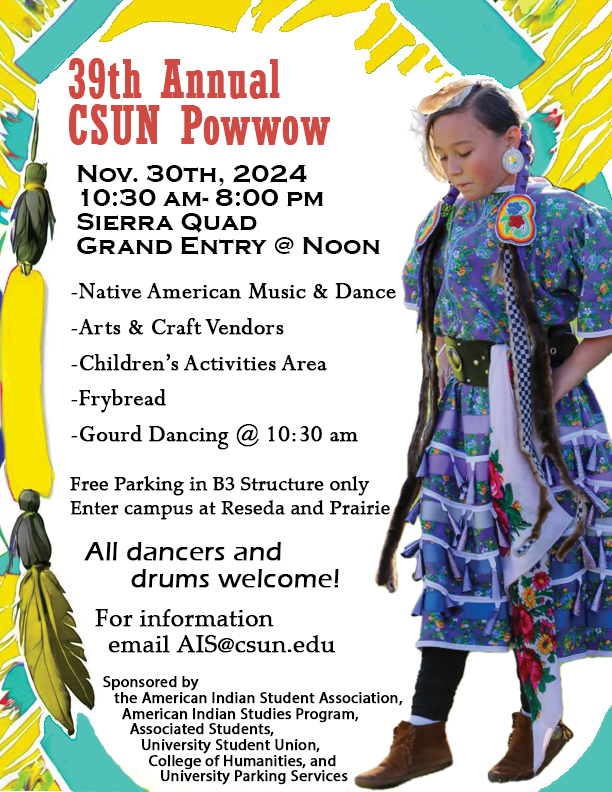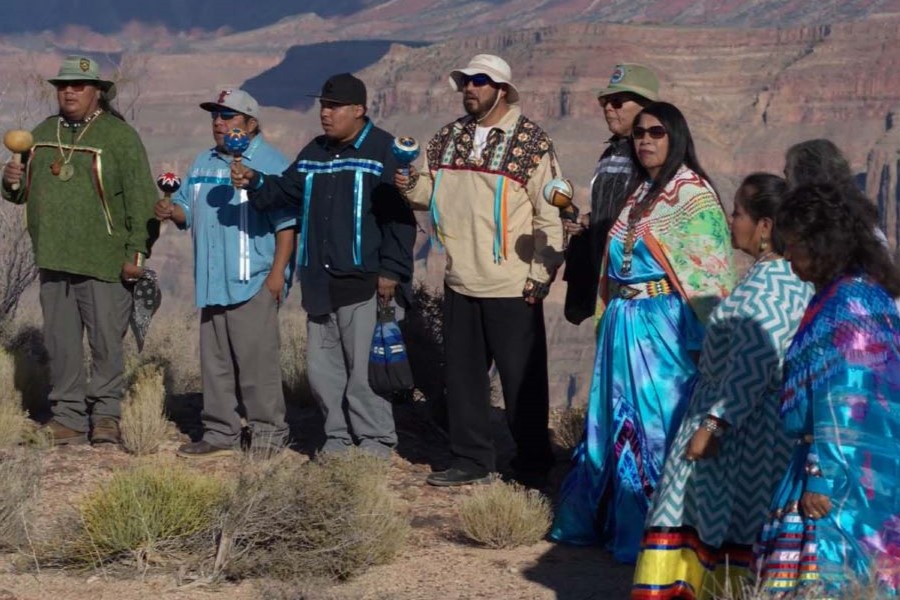Meshing technology and research to learn about Indigenous communities in AIS 250
Special thanks to Dr. Kalani Heinz, Assistant Professor of American Indian Studies, and CSUN students from AIS 250 Summer ’24 for their contribution to this blog post!
While the modern landscape is often dotted with skyscrapers, built concrete channels, and grassy parks, it is important to remind ourselves that this is not how it has always been. These places sit atop of what was and is Native lands, each with their own story to tell. However, in history classes, these stories are often overwritten by dominant narratives like settlers’ “discovery” of the new world, the mission period, or the gold rush. Erased are the vibrant histories of Indigenous lifeways and knowledges, and darker histories of displacement and genocide. American Indian Studies 250: American Indian and U.S. History has sought to push against Native erasure, instead tasking students to learn the Native histories of the world around them. To complete their midterm assignments, students in the 2024 summer session of AIS 250 were asked to look at the world around them to find the Native histories of National monuments or places that they frequent. Using a mix of archival research and modern stories, students showcased the histories of different Native communities through ArcGIS Storymaps. Here are a few selected histories from the term.
If you are interested in learning more about Native American culture, please visit our Powwow on November 30, 2024 from 10:30 am-8:00 pm. There will be food and activities for the whole family. All are welcome!

Native American Heritage Month at the CSUN Library

Locating narratives of Indigenous communities, histories, and identities
The ArcGIS Storymaps created by AIS 250 students each explore Indigenous history by using technology, research, and storytelling to articulate narratives that colonialism attempts to erase. In honor or Native American Heritage Month, the CSUN University Library recommends the following titles from our collection, which each discuss Native American identity, traditions, and history.
In addition to these eBooks, you can also browse our print book display in the Library lobby from November 7th through December 7th. This book display will also include additional AIS 250 projects exploring Indigenous counternarratives to dominant colonialist history.
Thank you to AIS Librarian Lynn Lampert for curating these book recommendations.
eBook recommendations: Native American narratives of identity, history, and community
Zitkala-Sa : letters, speeches, and unpublished writings, 1898-1929 , Zitkala-S̈a
“Zitkala-Ša: Letters, Speeches, and Unpublished Writings, 1898–1929 , edited by Tadeusz Lewandowski, offers a fascinating, intimate portrait of the Yankton Sioux writer and activist Gertrude Simmons Bonnin (1876–1938). Gertrude Bonnin, better known by her Lakota name, Zitkala-Ša, was one of the most prominent American Indians of the early 20th century. A talented writer, orator, and musician, she devoted much of her life to the protection of Native peoples. As such, Bonnin corresponded with many other distinguished persons within the early Native rights movement, including Carlos Montezuma, Richard Henry Pratt, and Arthur C. Parker, as well as Fathers Martin Kenel and William H. Ketcham of the Bureau of Catholic Indian Missions. This volume gathers together Bonnin’s letters, lesser-known writings and speeches, illuminating her private and public struggles.”– description from publisher
Black Indian : a memoir , Shonda Buchanan
“The physical, spiritual, and emotional displacement of American Indians who met and married Mixed or Black slaves and indentured servants at America’s early crossroads is where this powerful journey begins. Black Indian doesn’t have answers, nor does it aim to represent every American’s multi-ethnic experience. Instead, it digs as far down into this one family’s history as it can go–sometimes, with a bit of discomfort. But every family has its own truth, and Buchanan’s search for hers will resonate with anyone who has wondered ‘maybe there’s more than what I’m being told.'”—- description from publisher
Carry : a memoir of survival on stolen land, Toni Jensen
“Toni Jensen grew up around guns: As a girl, she learned to shoot birds in rural Iowa with her father, a card-carrying member of the NRA. As an adult, she’s had guns waved in her face near Standing Rock, and felt their silent threat on the concealed-carry campus where she teaches. And she has always known that in this she is not alone. As a Métis woman, she is no stranger to the violence enacted on the bodies of indigenous women, on indigenous land, and the ways it is hidden, ignored, forgotten. In Carry, Jensen maps her personal experience onto the historical, exploring how history is lived in the body and redefining the language we use to speak about violence in America. In the title chapter, Jensen connects the trauma of school shootings with her own experiences of racism and sexual assault on college campuses. “The Worry Line” explores the gun and gang violence in her neighborhood the year her daughter was born. “At the Workshop” focuses on her graduate school years, during which a workshop classmate repeatedly killed off thinly veiled versions of her in his stories. In “Women in the Fracklands,” Jensen takes the reader inside Standing Rock during the Dakota Access Pipeline protests and bears witness to the peril faced by women in regions overcome by the fracking boom. In prose at once forensic and deeply emotional, Toni Jensen shows herself to be a brave new voice and a fearless witness to her own difficult history–as well as to the violent cultural landscape in which she finds her coordinates. With each chapter, Carry reminds us that surviving in one’s country is not the same as surviving one’s country.” — description from publisher
Bad Indians : a tribal memoir, Deborah A. Miranda
“In this beautiful and devastating book, part tribal history, part lyric and intimate memoir, Deborah Miranda tells both the stories of her Ohlone/Costanoan-Esselen family and the experience of California Indians as a whole through oral histories, newspaper clippings, anthropological recordings, personal reflections, and poems. Reassembling the shards of her people’s past, she creates a work of literary art that is wise, angry, and playful all at once, one that will break your heart and teach you to see the world anew”— description from publisher
Searching for my destiny, George Blue Spruce
“Blue Spruce’s journey begins on the Santa Fe Indian School campus with his parents’ determination that their children would excel academically and obtain college degrees. After graduating from dental school, Dr. Blue Spruce planned to return to the pueblos to treat his people. As it turned out, his destiny reached far beyond: from the wilds of Montana to New York City to San Francisco to South America and back to the United States. In Washington DC, he presented the needs of American Indians to Congress and lunched with the president.”— description from publisher



